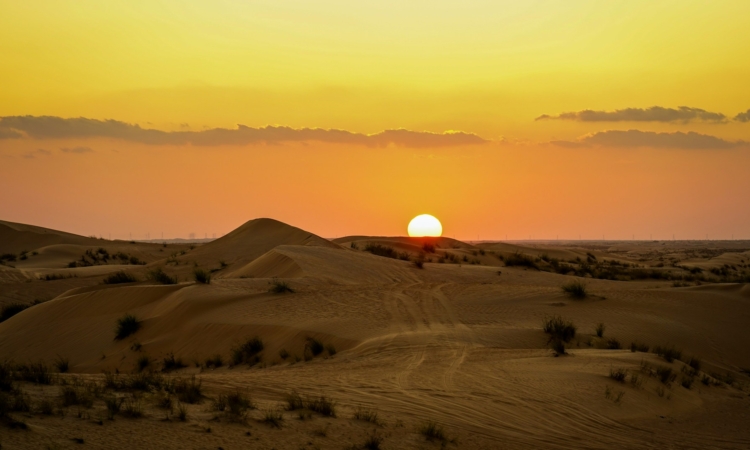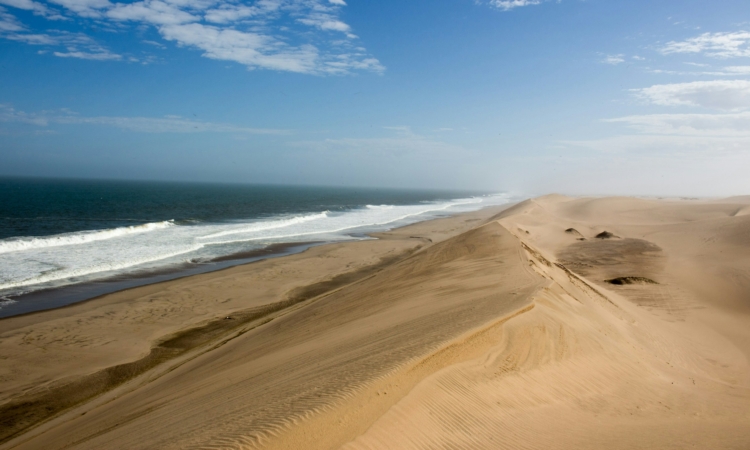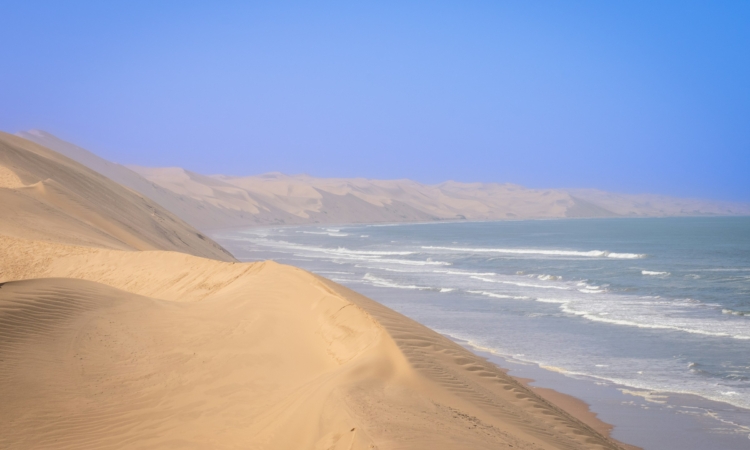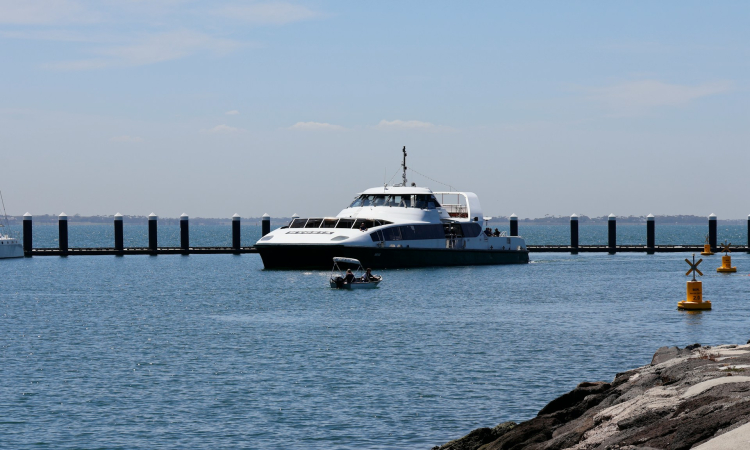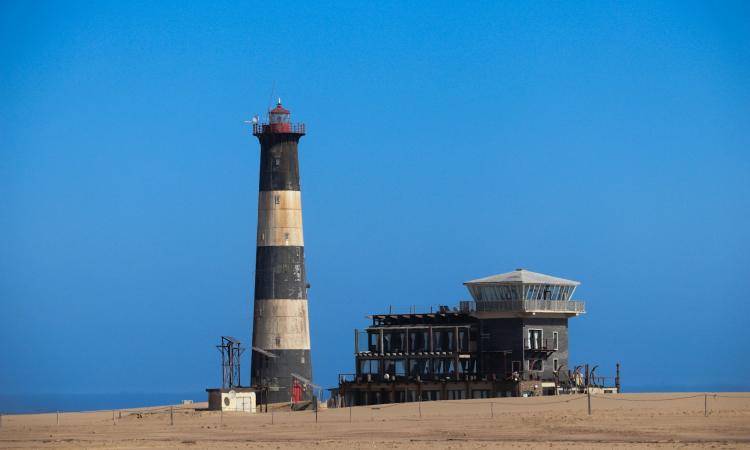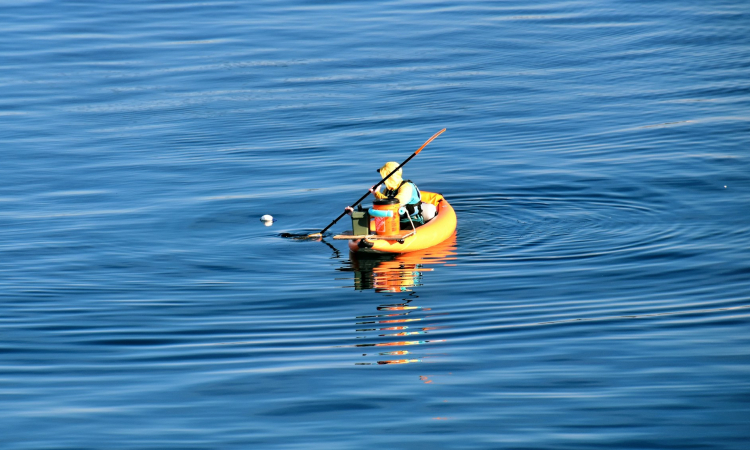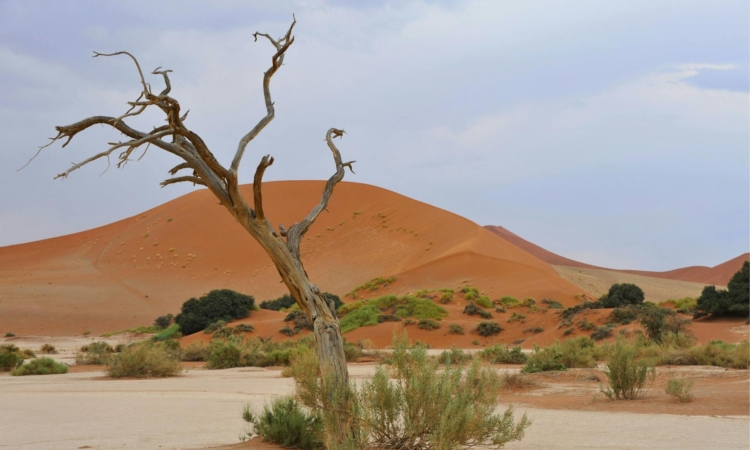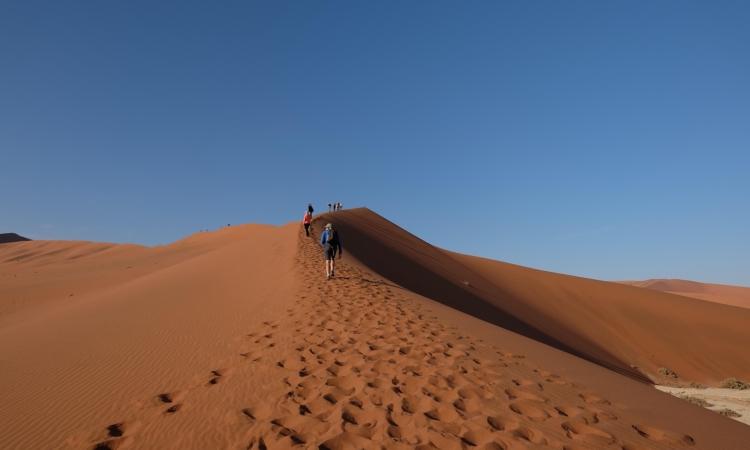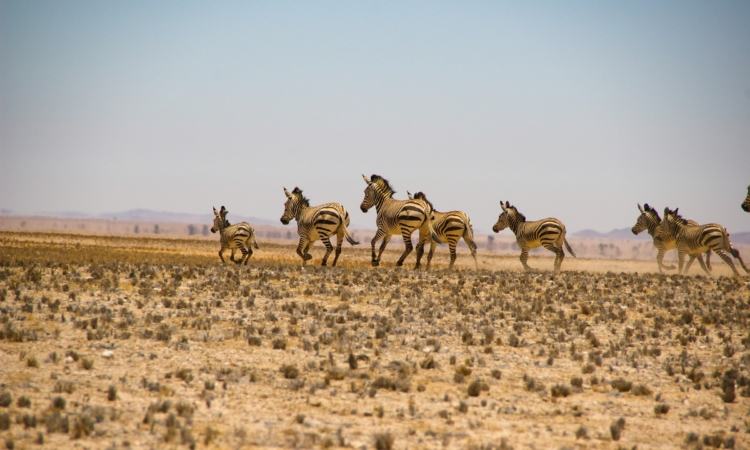Namibia’s Walvis Bay Wetlands, which include a lagoon, salt pans, and a bird sanctuary, are an important coastal wetland that is home to many migrating birds, including flamingos. It is one of five Ramsar sites in Namibia.
The Walvis Bay Bird Sanctuary is located between the Atlantic Ocean and the Namib Desert. As a Ramsar site, the sanctuary is known for its global importance as a wetland and is considered one of the most important coastal wetlands in Southern Africa.

Many bird species, including terns, pelicans, flamingos, and other local and migratory birds, can be seen in the marshes. Most of the more than 150,000 migratory birds that visit Walvis Bay in summer are non-breeding Palearctic and intra-African species.
You can see birds like the Great White Pelican, African Oystercatcher, Cape Teal, Black-necked Grebe, Chestnut-banded Plover, and both Greater and Lesser Flamingos.
Birds from northern Siberia and Europe travel between 10,000 and 14,000 kilometers each year to reach Walvis Bay.
These include Curlew Sandpiper, Sanderling, Grey Plover, Ruddy Turnstone, Little Stint, Marsh Sandpiper, Red Knot, Common Tern, Sandwich Tern, Caspian Tern, and Black Tern.
Best Time to Visit the Walvis Bay Bird Sanctuary

The best time for bird watching in Namibia, including Walvis Bay, is during the rainy season from November to April, when food is plenty and many migrating birds are around.
Many birds show their colorful feathers for breeding during this time, which is also the main breeding season. During the wet season, some areas are better for bird watching than for seeing other animals.
Stable water spots are a great choice for a birdwatching trip in the early summer months.
The Walvis Bay Bird Sanctuary offers visitors many things to do besides birdwatching. These include:
- Boat tours: Tour companies offer boat trips to see wildlife and explore the bays and islands of the sanctuary.
- Hiking: There are several walking routes around the sanctuary with good views of the area.
- Fishing: Fishing is allowed in some parts of the sanctuary and is a nice way to relax and enjoy the area.
- Bird photography: Photographers can take great pictures of birds and other wildlife in the sanctuary.


